Spirituality In Arunachal Pradesh
The culture of Arunachal Pradesh is truly varied in the sense that the state has 26 major tribes including sub-tribes. Every tribe has their own unique set of traditions and customs. The major tribes of Arunachal are: Adi, Galo, Aka, Apatani, Nyishi, Tagins, Bori, and Bokar etc.
Tribes & Beliefs
The culture of Arunachal Pradesh is truly varied in the sense that the state has 26 major tribes including sub-tribes. Every tribe has their own unique set of traditions and customs. The major tribes of Arunachal are: Adi, Galo, Aka, Apatani, Nyishi, Tagins, Bori, and Bokar etc.
The sun and the moon are the presiding deities of the major tribes who follow the Donyi-Polo religion (the name stands for sun and moon). The West Kameng and Tawang district are mainly inhabited by the Tibetan-influenced Monpa and Sherdukpen tribe. In Lohit district it is the Khampti and the Singpho tribe. All these four major tribes are followers of two different sects of Buddhism (Mahayana Hinayana). The other tribes are basically followers of ancient beliefs with animal worship being quite prominent amongst them.
Festivals
Arunachal’s cultural lifestyle is dominated by colourful festivals. Since agriculture is the mainstay here so people generally celebrate festivals as a mark of thanksgiving to the Almighty for giving them a good harvest. These festivals also showcase the artistic skills of the various tribes. To experience the cultural festivals of the state, one should visit Ziro district which is very popular for festivities.
Spiritual Places
Chumi Gyatse Temple (Holy Water fall Temple)
Chumi Gyatse Temple at Holy water fall is a collection of 108 waterfall streams.It is at a location which is 4 hrs from Tawang City near Tsechu Hot water stream at Tsechu village (Damteng). Chumi Gyatse Temple are highly revered for the Monpas tribe (Tibetan Buddhist) of the state.Its water is highly purified which has various medicinal values.

Situated in the banks of River Teang, Kongmu Kham at Tengapani is a sight to behold. The splendid golden pagoda built in the Thai/Burmese style sits majestical amidst a beautiful landscaped garden surrounded by lush greenery and exudes peace and serenity. Within the golden pagoda is housed a beautiful gilded statue of Buddha which is modelled on the kala Buddha of Nalanda archive.
The area also houses a centre for cultural research of the Tai Khampti-singpho tribes, a library and a monastery. Nearby is a tourist resort which provides accommodation in the form of individual villas and dormitories. Guest can enjoy the view of the beautiful golden pagoda from here and visit the nearby areas.
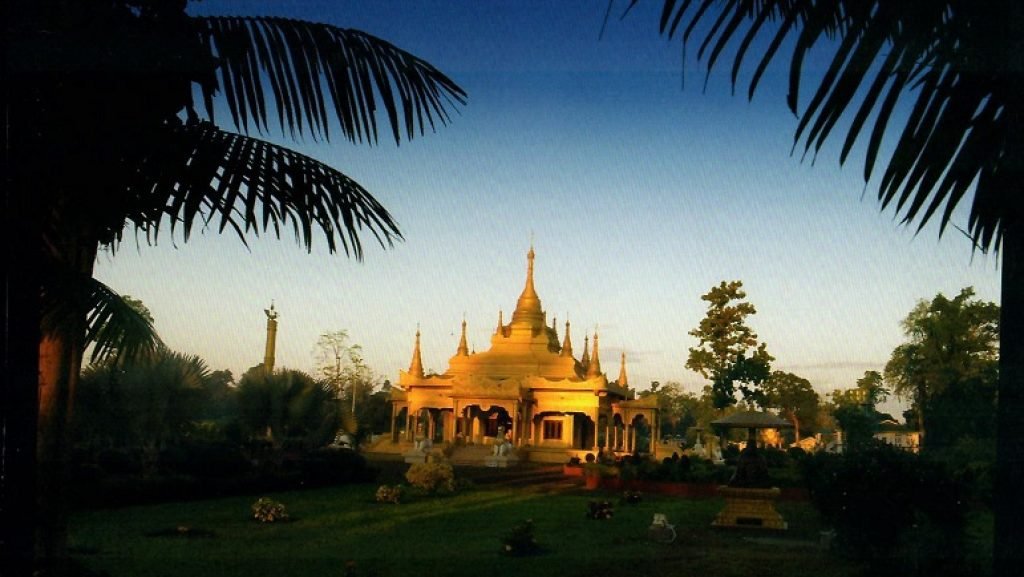

Empong Monastery
Empong monastery is considered by the local people as ‘Ti Met’ (holy place) as it is believed that the statue installed in there has special powers. The story goes that long time ago an innocent villager sometimes used the statue of Lord Buddha as guard to keep an eye on the rice grains drying in the sun and drive the birds away. It was noticed that whenever this was done, no birds came near to feed on the rice grains and rice stock remained intact. A visitor to the village noticed this, considered it to be the miraculous working of the statue, brought it back and installed it in the Empong monastery. Believers visit the place to have their wishes fulfilled and hundreds flock here during the Sangken Festival every year. The sleepy village of Empong under Chongkham circle has another draw to it. It is believed that childless couples come here to the monastery to pray for their wishes and have had it fulfilled.
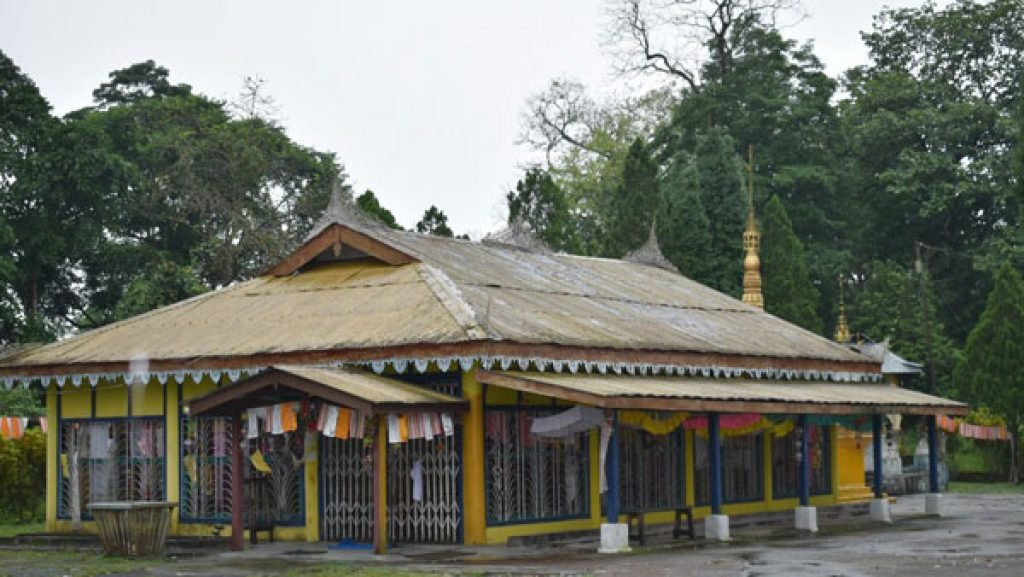
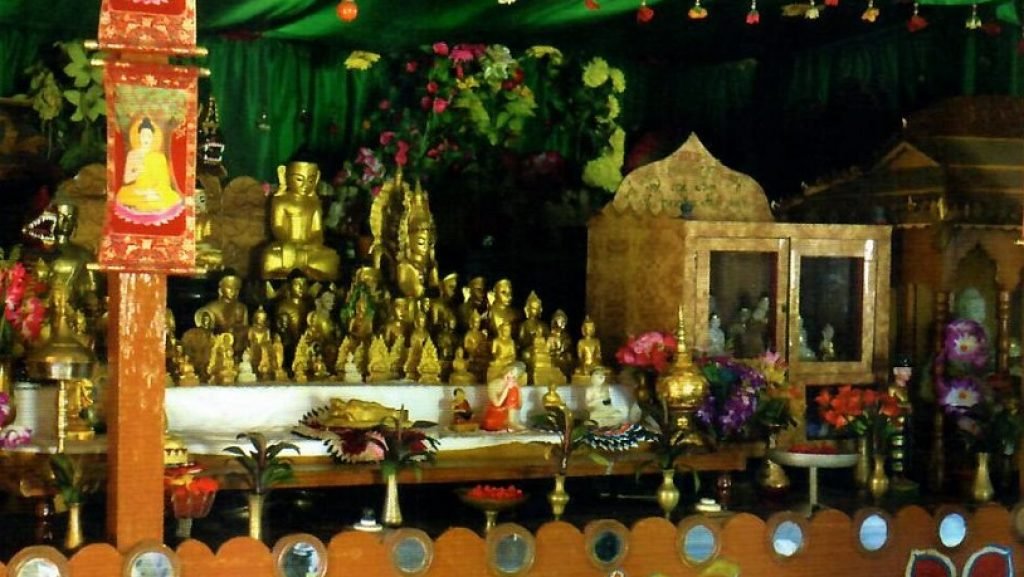
About five kilometres southeast of Tawang township, by the national highway is the Urgelling monastery founded by Ugyen Sangpo. It is said that the temple, was initially quite modest in construction. However, when the royal father was at his deathbed, he wished that the gonpa be renovated. Unfortunately, the enlarged monastery was sacked around 1714,by the Dzongar Mongols, who were averse to the Nyingmapa sect, during the course of a campaign against Bhutan.The present Urgylling gompa is a modest one, of a little more than 180 square metres in plinth area. It is a double storied structure. Rows of prayer-wheels are set in niches almost all along the outer walls of the temple. The northern side of the ground floor houses nine chortens. There is a two-tiered altar housing the statues of Buddha Shakyamuni as the chief image, the Sixth Dalai Lama, Je Yabse sum, twenty-one Taras, Maitreya, The Fifth Dalai Lama and other divinities along with beautiful Murals and Thangka paintings adorning the inner walls.Every year on the 6th of July, the birthday of the 14th Dalai Lama is celebrated with great fanfare at the Gompa, by the locals.
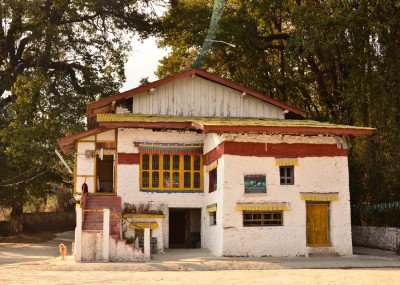
Happens to be one of the largest Shiva linga unearthed in recent times, Shiva Lingam in the Kardo Forest is the miraculous discovery of Mr. Prem Subha, who found this 25 ft tall and 22 ft wide Shiva lingam while cutting a tree during the holy month of Shravana. It is believed that the tree was on the verge of falling. Fortunately, nothing happened to the lingam, and the tree falls a few kilometers away. Suddenly something struck in his mind and realized that it was not a mere stone. It stood clearly visible which appealed him to believe it as Shiva Lingam. One can see the traces of this ancient Lingam in the 17th chapter of the ninth section (Nava Khand ke Satrahwa Adhyaya) edition 1893, where it mentioned that the tallest Shiva Lingam will appear at a place which will be called Lingalaya. At the spot, one can not only see the lingam but also the image of Goddess Parvati and Lord Ganesha with trunk turning leftward. One can also find the river passing by the bottom of the lingam.

The Famous Gaden Namgyal Lhatse roughly translated as “The peak of the heavenly abode of joyfulness and complete victory” and, popularly known as the Tawang Monastery was founded by Merak Lama Lodre Gyatso in the year 1680-81. The monastery stands on the spur of a hill, about 10,000 feet above sea level having ravines in the south and west, a narrow ridge on the north and gradual slope on the east. The monastery apart from being is the fountain-head of the spiritual life of the people of this region is also the most important Socio-Cultural Institute having tremendous influence on the culture and day-to-day life of the inhabitants of the region.
The approach to the monastery is from the north along the ridge. Near the entrance to the monastery there is a building housing the dunggyur mani from where the water is fetched for use in the monastery. To the south of it is the kakaling, a hut-like structure which serves as the entrance gate to the monastery. After passing through the kakaling there is a big gate further south which is without any door, beside the gate, the recently constructed Tibetan dispensary and the new library complex is located.
The Main gate of the monastery is located further south, it is fitted with huge doors and is set in the northern wall of the monastery. There is another gate near the southern end of this wall which is fitted with a huge door. Near it there are two slits in the wall to see out through all along the outer side of the eastern wall connecting the gate to the kakaling. It is said that the yarn given by the Vth Dalai Lama to Merak Lama enclosed the area bounded by the four walls.
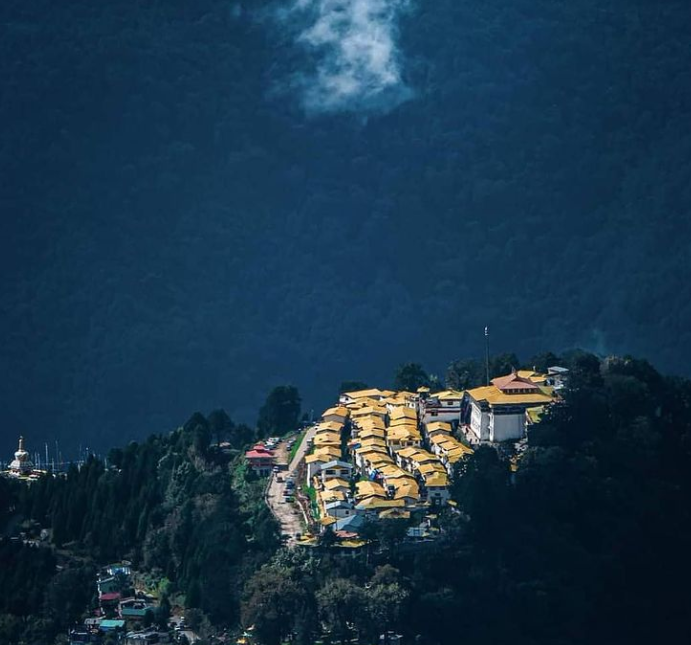
Parshuram Kund is a Hindu pilgrimage sites situated on the Brahmaputra plateau in the lower reaches of the Lohit River and 21 km north of Tezu in Lohit district of Arunachal Pradesh, India. Dedicated to sage Parshuram, the popular site attracts pilgrims from Nepal, from across India, and from nearby states of Manipur and Assam. Over 70,000 devotees and sadhus take a holy dip in its water each year on the occasion of Makar Sankranti, in the month of January.
It is a shrine of all-India importance located in the lower reaches of the Lohit River. Thousands of pilgrims visit the place in winter every year, especially on the Makar Sankranti day for a holy dip in the sacred kund which is believed to wash away one’s sins. There is a mythological story behind this beautiful place as told by the local people. It is believed that Lord Parashuram the sixth incarnation of Lord Vishnu, on the orders of his father Rishi Jamadagni, beheaded his mother Renuka with his axe. Since he had committed one of the worst crimes of killing one’s mother, the axe got stuck to his hand. His father pleased with his obedience decided to give him a boon to which he asked for his mother to be restored back to life. Even after his mother was brought back to life the axe could not be removed from his hand. This was a reminder of the heinous crime he had committed. He repented for his crime and on taking the advice of eminent rishis of that time, he arrived at the banks of Lohit River to wash his hands in its pure waters. It was a way to cleanse him of all the sins. As soon as he dipped his hands into the waters the axe immediately got detached and since then the site where he washed his hands became a place of worship and came to be known by sadhus as Parashuram Kund. Also there are many stories varying from region to region in India that describe the above incident and there are numerous temples dedicated to Lord Parashuram most of which are in Kerala. But this place attracts many pilgrims from near and far and quite a few sanyasis reside here and take care of the temple that is dedicated to Lord Parashuram.

Malinithan is an archaeological site which consists of ruins of a Hindu temple of the early medieval period on the northern bank of the Brahmaputra River in the Indian state of Arunachal Pradesh. The archaeological studies of the ruins indicate that the temple was built with granite stones during the period of Hinduism influence in the region. It was built by Chutia kings in the 13th-14th century.
This was the period when the Chutia kings had started setting Brahmins in different areas of their kingdom offering them land grants.[6] Kechai-Khaiti, a Chutia tribal goddess was believed to be the chief deity who was worshipped in the ruined temple. The location of a narrow stream named Akashiganga similar to the site of Tamreswari and Bura-Buri Temples of Sadiya indicates that sacrifices were once performed in the temple.

One of the famous Hindu pilgrimage sites in Arunachal Pradesh, Akashiganga temple is located 12 km from Malinithan towards Along in West Siang District. Legends have it that one of the body parts of Sati fell in this location. Since then, this temple is regarded as an important holy destination for Shakti worship. According to Hindu mythology, this temple is associated with the story of Lord Shiva, as the story goes; Lord Shiva carried the dead body of Sati and roamed around in the sky and seeing this melancholy act, Lord Mahavishnu cut the dead body into many pieces using Sudarshan Chakra. This lead the body parts to scatter all around India. You may see other prominent temples dedicated to Maa Sati.
However, the head part of the Goddess Sati fell at Arunachal Pradesh and the place later was build into a sacred temple Akashiganga for the Shakti worshipers. Besides, the actual Sacred Kund is located 100 meters from the temple and to get there a need to go downwards through the spiral path. The major reason to visit Akashiganga temple is because you can see a glittering object in afar distance but as one gets closer the shining object disappears. Hence, due to this the devotees from across the world come to take a glance of this phenomenon attraction. There is also a sacred pond and it is also believed to have some medicinal value for curing any kind of disease.
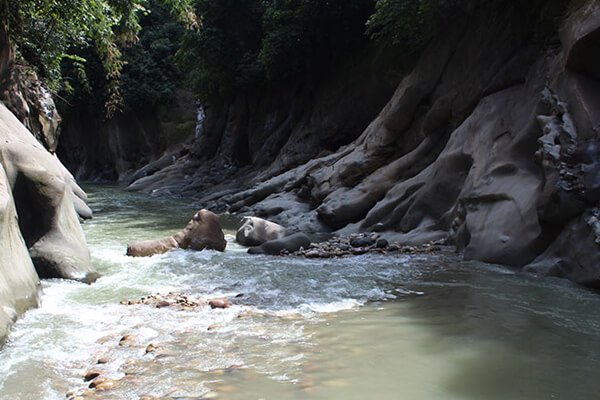
Travel Plans For Inspiring You
ANGLING
ANGLING
Accommodation in Lower Subansiri is a fantastic option if you’re travelling as a group or value having your own space and self-catering facilities.
WILDLIFE
WILDLIFE
Arunachal Pradesh proudly enjoys the distinction of having the big four namely tiger, leopard, clouded leopard and snow leopard in its jungles
RAFTING
RAFTING
Those who have a penchant for river sports make it a point to indulge in rafting on the Siang River which is so thrilling.
CULTURE
CULTURE
The culture of Arunachal Pradesh is truly varied in the sense that the state has 26 major tribes including sub-tribes.
TREKKING
TREKKING
Foreign tourists, particularly adventure seekers are regular visitors who come here to explore the numerous trekking routes located in the mountains.
HERITAGE
HERITAGE
Arunachal Pradesh has many notable spots that bear testimony to its rich heritage.

